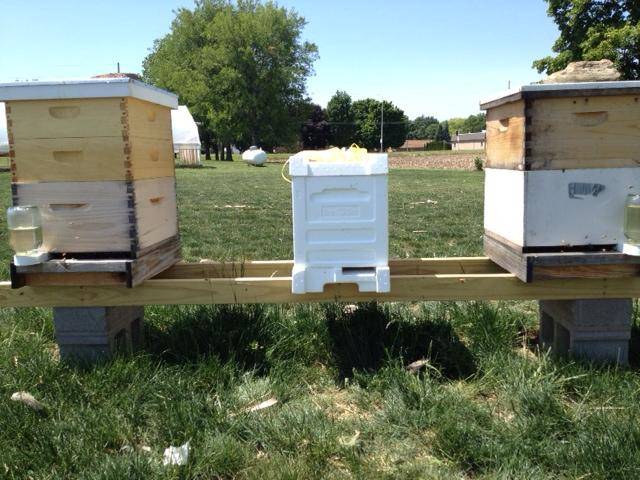Without a laying queen, a hive cannot survive.
Although a hive might be filled with as many as 60,000 working females, only the queen can produce the precious eggs that are necessary to keep the hive going. Do the math: It takes about 21 days for a worker bee’s egg to develop into an adult. Worker bees who are born in the summer are expected to live only six short weeks. That means that an entire colony can die within two and half months if they are not renewed by a new generation of bees. A hive that has a queen who is laying well is a “queenright” hive.
Sometimes a hive loses its queen. If she is old and laying poorly, the hive may decide on its own to supersede her. They do this by selecting a few eggs and feeding them a special diet, extra rich in royal jelly. The special diet turns ordinary worker eggs into queen eggs. At the same time, the bees enlarge the cells of these special larvae because queens are big and need more room. The queen bee cells are easy to spot when a beekeeper is inspecting the nursery.
But sometimes hives don’t have a queen for other reasons. For example, a swarm, a cluster of bees , may decide to leave their hive because living quarters have become too cramped or are otherwise no longer suitable. Sometimes a queen might accompany them, but sometimes she might not. For example, a swarm I caught in July did not have a queen. But I didn’t know that at first.
After I captured the swarm, I placed it in an empty hive body and checked it periodically for a laying queen. Since I did not see the queen, I also looked for new eggs and larvae. After three weeks of no sign of a laying queen, I concluded that the hive needed help. Fortunately, at the same time, another hive was rearing several queen cells. I “borrowed” a couple of cells and placed them in the hive with the swarm. To my delight, within a few days the cells hatched and I spotted a new queen.

“Congratulations, girls!” I chortled in the apiary. “You have a new queen and she’s a beauty!”
But the cycle was not yet complete. Now that I knew the queen had hatched, she still had to go on her maiden voyage to find the man – er, men – of her dreams. Queens usually mate with 15 to 25 male bees, called drones. Because the weather had turned exceptionally hot, I wasn’t sure that drones would be flying. But I underestimated the call of the wild. Of course they would fly if they sensed a new girl in the neighborhood.
And fly they did. I know because when I checked the hive a week later, I was rewarded with the sign I had been looking for, eggs in the nursery. At last! Now that swarm is back on track and growing fast. The queen, it seems, found her Prince Charmings. This hive is now a home.













